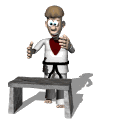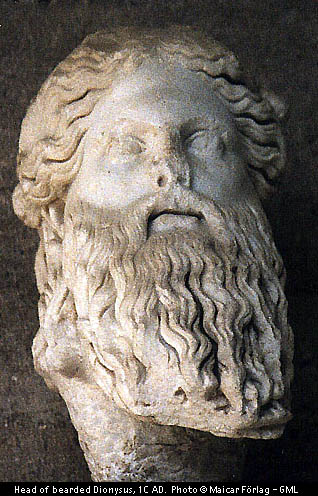dict. acting
dict. theatre
dict. script
...
ANGLE The position from which camera photographs action. Camera point of view. High, low.
BEAT A smaller dramatic unit within a scene; a scene within a
scene; a change in direction of scene content.
CLIMAX The point at which the complication reaches its point of maximum tension and the forces in opposition confront each other at a peak of physical or emotional action. (see Dictionary @ Theatre w/Anatoly)
COMPLICATION The section of a story in which a conflict begins
and grows in clarity, intensity, and importance.
COMPOSITION (visual) A harmonious arrangement of two or more
elements, one of which dominates all others in interest.
COVERAGE The camera angles a director needs for dramatizing values in a scene and for effective editing. For example, a full shot, over-shoulder shots, closeups.
CUT -- between two shots.
CUTAWAY A cut to a person or action that is not the central
focus of attention, perhaps to a spectator. Sometimes used by editors to delete unwanted footage.
DENOUEMENT A brief period of calm following the climax, in which
a state of relative equilibrium returns (RESOLUTION).
EXPOSITION Information that the audience needs to know to understand a story. Introduction of a conflict, character(s), theme(s)
EDITING The SELECTING of significant event details and the SEQUENCING of such details into a comprehensive whole.
FRAME The perimeter of a TV/film picture; a single photographic
unit of film. Also a verb: to enclose or encompass subject matter.
IDENTIFICATION The viewer's emotional involvement with (usually) the protagonist in drama; the viewer becomes the protagonist (ID in acting).
INTERNAL CONFLICT A psychological conflict within the central
character. The primary struggle is between different aspects of a
single personality.
LEITMOTIF A motif or theme associated with specific person,
situation, or idea; usually reprised for dramatic effect. Leitmotif is some intentionally repeated element (sound, shot, dialogue, music, etc.) that helps unify a film by reminding the viewer of its earlier appearance.
MONTAGE A term that originally referred to the editorial assembling of film segments. Montage today describes a rapid succession of images that convey a single concept.
Point of view (POV) shot A subjective camera angle that becomes the perspective of a character. We look at the world through his or her eyes.
POLYPHONY The combination of two or more melodic lines
(horizontal vectors), which, when played together, forms a
harmonic whole (Vertical vectors).
PROGRESSION The traditional climbing action of drama, a growth
in dramatic tension. Increasingly close camera angels represent
camera progression.
PRIMARY MOTION (Event) motion in front of the camera.
REACTION SHOT A shot that shows a character "reacting" rather
than acting. The reaction shot is usually a close-up of the
emotional reaction registered on the face of the person most
affected by the dialogue or action.
RHYTHM In visual composition, the pleasing repetition of images.
In drama: repetition of phrases, actions, or musical themes for
increased dramatic effect.
SCREEN DIRECTION The consistent pattern of movement from angle
to angle: left to right or right to left.
STYLE A director's personal pattern of treating material,
including staging of camera and performers, script elements, and
music.
SECONDARY MOTION Camera motion, including pan, tilt, pedestrian, crane or boom, dolly, truck, arc and zoom.
SCENE A clearly identifiable, organic part of an event. It is a small structural (action) or thematic (story) unit, usually consisting of several shots.
SEQUENCE The sum of several scenes (or shots) that compose an
organic whole.
SETTING The time and place in which the film's story takes
place, including all of the complex factors that come packaged
with a given time and place: climate, terrain, population
density, social structures and economic factors, customs, moral
attitudes, and codes of behavior. Also, see Exposition
SHOT The smallest convenient operational unit in film. It is the interval between two distinct video transitions, such as cuts, dissolves, wipes.
STOCK CHARACTERS Minor characters whose actions are completely
predictable or typical of their job or profession.
SUBJECTIVE TIME The duration we feel; also called psychological
time. A qualitative measure.
TIMING The control of objective and subjective time.
VISUALIZATION The mental visual image of an event in a single
shot. (see Conceptualization)

Part II. ABBREVIATIONS AND TERMS
Action match cut Cut made between two different angels of the
same action using the subject's movement as the transition.
Ambient sound Sound naturally occurring in any location.
Aspect ratio The size of a screen format expressed as the ratio of the width in relation to the height. Films made for
television are photographed at a ratio of 1.33:1.
Attack (sound) The beginning portion of any sound.
Camera motivation A shot or a camera movement must be motivated within the terms of the scene or story if it is not look alien and imposed. (see POV).
Complementary shot A shot compositionally designed to intercut with another.
Continuity Consistency of physical detail between shots intended to match.
Contrast ratio Ratio of lightest to darkest areas in an image.
Controlling point of view The psychological perspective (a
character's or the storyteller's) from which a particular scene
is shown.
CS Close shot.
CU Closeup.
DP Director of photography.
Dissolve The gradual merging of the end of one shot with the
beginning of the next, produced by superimposing a fade-out onto
a fade-in of equal length or by imposing one scene over another.
Dynamic composition Pictorial composition as it changes within a moving shot.
Establishing shot A shot that establishes a scene's geographical and human contents.
Eye-line shot A shot that shows us what a character is seeing.
Ext. Exterior.
External composition The composition between two images at the point of cutting between them.
FG Foreground.
FI Fade in. Fade-out/fade-in * A transitional device in which
the last image of one scene fades to black as the first image of
the next scene is gradually illuminated.
Final cut A film in its finished form. A guarantee of final cut assures the filmmaker of producer that the film will not be
tampered with after they approve it.
Flash forward Moving temporarily forward in time, the cinematic equivalent of the future tense. This quickly becomes a new form of present.
Flashback Moving temporarily backwards in time; a cinematic past tense that soon becomes an ongoing present.
FO Fade out.
Genre A kind or type of film (horror, sitcom, drama, etc.)
Headroom Compositional space left above heads.
High angle Camera mounted high, looking down.
High contrast Image with large range of brightness.
Insert A close shot of detail to be inserted in a shot
containing more comprehensive action.
Int. Interior.
Jump cut Transitional device in which two similar images taken at different times are cut together so that the elision of
intervening time is apparent. From this the audience infers that
time has passed.
LA Low angle. Camera looking up at subject.
Line of tension Invisible dramatic axis, or line of awareness, that can be drawn between protagonists and important elements in a scene.
Master shot Shot that shows most or all of the scene and most or all of the characters.
MCS Medium close shot.
MLS Medium long shot.
MS Medium shot.
Overlap cut Any cut in which picture and sound transitions are staggered instead of level-cut.
Pan Short for panorama. Horizontal camera movement.
Prop Property.
Rising action The plot developments, including complication and conflict, that lead to a plot's climax.
Rushes Unedited raw footage as it appears after shooting.
Scene axis The invisible line in a scene representing the
scene's dramatic polarization. Coverage is shot from one side of
this line to preserve consistent screen directions for all
participants. Complex scenes involving multiple characters and
physical regrouping may have more than one axis (Crossing the
line).
Scene breakdown A crossplot that displays the locations,
characters, and script pages necessary to each scene.
SFX Sound effects.
Shooting ratio The ratio of material shot for a scene in
relation to its eventual edited length. 8:1 is a not unusual
ratio for dramatic film.
Shooting script Screenplay with scenes numbered and amended to show intended camera coverage and editing.
Single shot A shot containing only one character.
Slow Motion The effect of slowed action created by exposing
frames in the camera at greater-than-normal speed and then
projecting that footage at normal speed (twenty-four frames per
second).
Split page format A script format that places action on the left hand side of the page and its accompanying sound on the right.
Storyboard Series of key images sketched to suggest what a series of shots will look like.
Take One filmed attempt from one setup. Each setup may have
several takes.
Theme A dominant idea made concrete through its representation by the characters, action, and imagery of the film.
Three-shot/3S Shot containing three people.
Treatment Usually a synopsis in present tense, short story form of a screenplay summarizing dialogue and describing only what an
audience would see and hear. Can also be a puff piece designed
to sell the script rather than give comprehensive information
about content.
Two-shot/2S Shot of two people.
VO Voice over.
WA Wide angle.
Whip pan Very fast panning movement.
White balance Video camera setup procedure in which circuitry is adjusted to the color temperature of the lighting source so that a white object is rendered as white on screen.
WS Wide shot. See -- LS (long shot)
XLS Extra long shot.
Zoom ratio The ratio of the longest to the widest focal lengths. (A 10 to 100 mm zoom would be a 10:1 zoom).

It will take some time to hyper-link everything. For now, please, search the words the old fashion way.
I will indicate somehow, which terms belong to which level. Including the pre-college kids.
TRAVEL THE SITE:
Front
Concepts
Directing: Basics
Film 600
View Points
Analysis
FIlm Club
NORTH
Tarkovsky
Bergman
Eisenstein
Theory: Semiotics
Film-Pomo
Reference Page
Books
Film Notes
Film Directing









 vtheatre.net
vtheatre.net


 blog: anatoly-film
blog: anatoly-film





